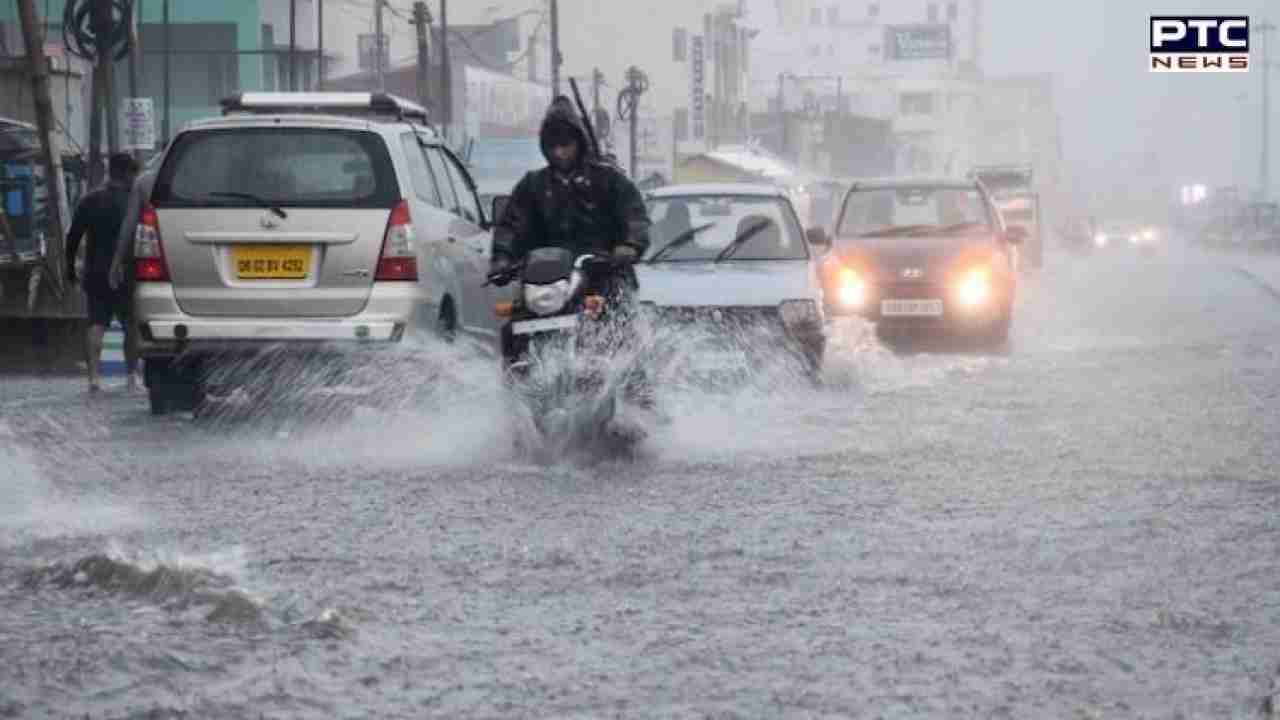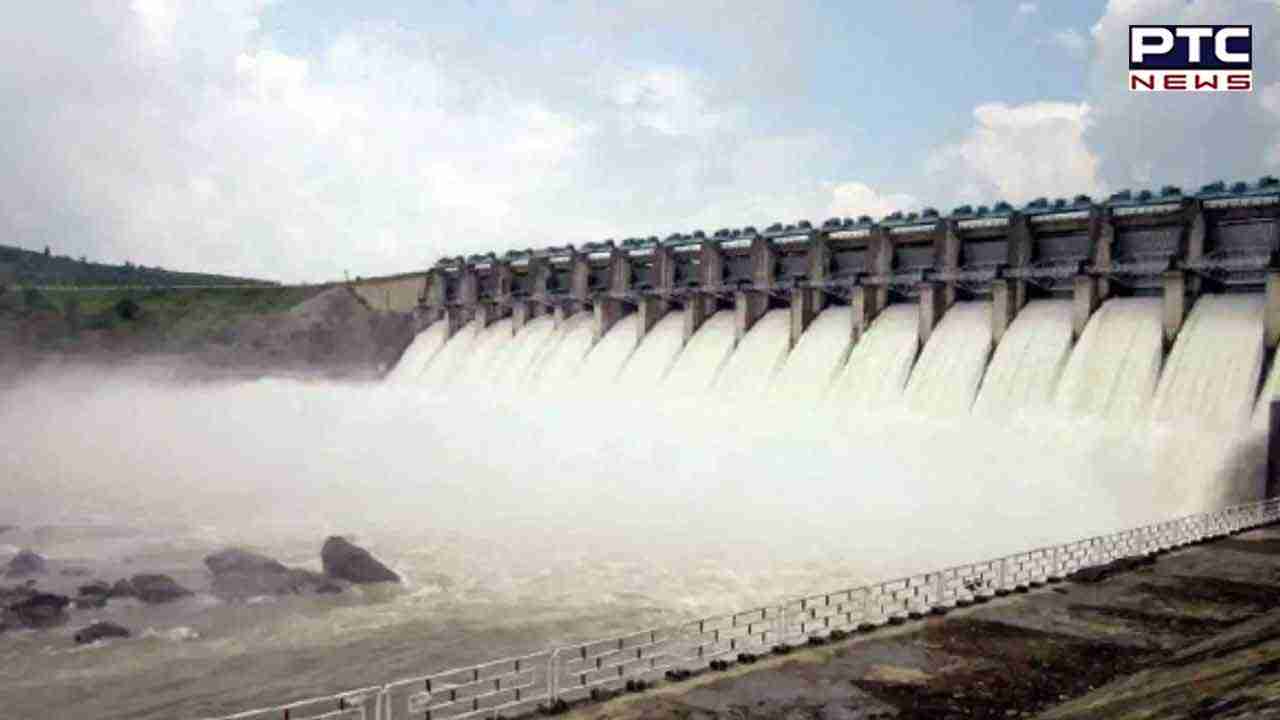

Monsoon Marvel: 10 dams in Punjab, Haryana, and Rajasthan reach 43% water storage, powering growth
PTC News Desk: Punjab, Haryana, and Rajasthan have received a timely monsoon this year, leading to a significant increase in water storage in 10 dam reservoirs located in these states. The live storage capacity of these reservoirs, which refers to the actual water storage against their Full Reservoir Level (FRL), has reached 43% of their total capacity. This surge in water availability is a promising development, especially when compared to the storage levels of the previous year and the ten-year average.
According to the data provided by the Central Water Commission (CWC), the total live capacity of the 10 reservoirs, including one in Punjab, three in Himachal Pradesh, and six in Rajasthan, amounts to 19.663 Billion Cubic Meters (BCM).
As of June 30, the live storage in these reservoirs reached 8.473 BCM, representing 43 per cent of the total capacity. Comparatively, during the same period last year, the live storage was only 23 per cent, marking an increase of 87 per cent this year. Furthermore, the ten-year average storage for this period stood at 31 per cent of the live capacity.
 In Punjab, the Thein dam currently holds a live storage of 1.233 BCM, which is 53 per cent of its Full Reservoir Level capacity of 2.344 BCM. The water level in the dam is currently at 512.44 meters, with its highest level recorded at 527.91 meters. In contrast, the live storage in the dam during the same period last year was 33 per cent, while the ten-year average was 51 per cent.
In Punjab, the Thein dam currently holds a live storage of 1.233 BCM, which is 53 per cent of its Full Reservoir Level capacity of 2.344 BCM. The water level in the dam is currently at 512.44 meters, with its highest level recorded at 527.91 meters. In contrast, the live storage in the dam during the same period last year was 33 per cent, while the ten-year average was 51 per cent.
Among the reservoirs in Himachal Pradesh, the Gobind Sagar (Bhakra) dam, Pong dam, and Kol dam have witnessed a notable increase in live storage levels. By June 30, Gobind Sagar dam reached 34 per cent of its live capacity, Pong dam stood at 40 per cent, and Kol dam reached 41 per cent. Comparatively, during the same period last year, the storage levels were significantly lower: 20 per cent for Gobind Sagar, 10 per cent for Pong, and 21 per cent for Kol. The ten-year average storage for this period in these dams is 30 per cent, 22 per cent, and 39 per cent, respectively.
In Rajasthan, five out of the six dams recorded higher storage levels compared to last year. Jhakam dam was the only one that reached 25 per cent capacity by June 30, lower than last year's 43 per cent and the ten-year average of 27 per cent. However, the other five dams, namely Mahi Bajaj Sagar, Rana Pratap Sagar, Bilaspur, Jawai, and Jaisamand, witnessed increased storage levels of 33 per cent, 80 per cent, 60 per cent, 45 per cent, and 55 per cent, respectively.
In contrast, last year's storage levels for these dams were 31 per cent, 63 per cent, 22 per cent, 5 per cent, and 30 per cent. The current storage levels in these dams are also higher than the average storage of the past decade. Additionally, the hydel plants built on these reservoirs generate approximately 3,500 Mega Watts (MW) of power.
The significant water storage in these reservoirs, coupled with the timely monsoon, ensures there will be no shortage of water for irrigation purposes, particularly in areas where canal irrigation is prevalent, even if there is a deficit monsoon. The southwest monsoon has covered the entire country earlier than the normal date of July 8, and it has further advanced into Punjab, Haryana, and Rajasthan.

These regions have experienced rain, with some places witnessing significant precipitation. For instance, Punjab received 72.1 mm of rain from June 1 to July 1, which is 16 per cent above the normal requirement for this period. Punjab and Haryana received 29 per cent and 46 per cent surplus rain, respectively, in June, while Chandigarh received 12 per cent less rain than the normal requirement.
The Central Water Commission is actively monitoring the live storage of 146 reservoirs across the country, which have a total live storage capacity of 178.185 BCM. These reservoirs account for approximately 69.11% of the estimated live storage capacity of 257.812 BCM in the country.
As of the latest reservoir storage bulletin, the available live storage in these reservoirs stands at 47.95 BCM, representing 27 per cent of the total live storage capacity. Compared to the corresponding period last year and the ten-year average, the current live storage in these 146 reservoirs is higher. It is worth noting that 18 of these reservoirs are part of hydro-electric projects.
 The timely monsoon has proven to be a boon for water storage in Punjab, Haryana, and Rajasthan. The 10 dam reservoirs across these states have reached 43 per cent of their total live storage capacity, which is a significant improvement compared to the previous year and the ten-year average.
The timely monsoon has proven to be a boon for water storage in Punjab, Haryana, and Rajasthan. The 10 dam reservoirs across these states have reached 43 per cent of their total live storage capacity, which is a significant improvement compared to the previous year and the ten-year average.
This increase in water availability ensures ample irrigation water for agricultural purposes and supports the hydel plants that generate a substantial amount of power. The positive water storage levels in these reservoirs, along with the promising monsoon forecasts, provide optimism for the agricultural and energy sectors in the region.
Also Read: July Supermoon 2023: What is Supermoon, causes, how and when to see, impact
- With inputs from agencies
